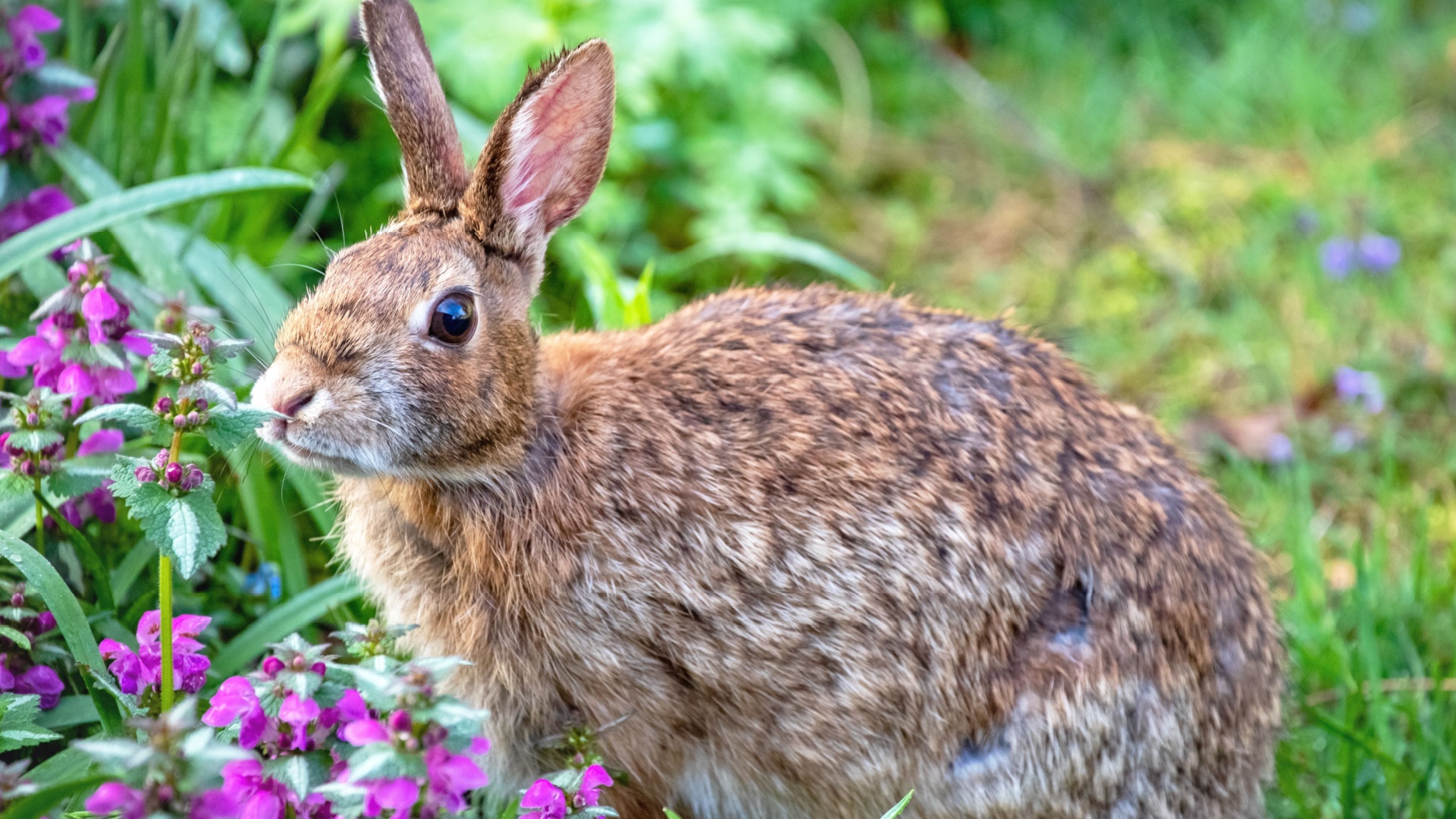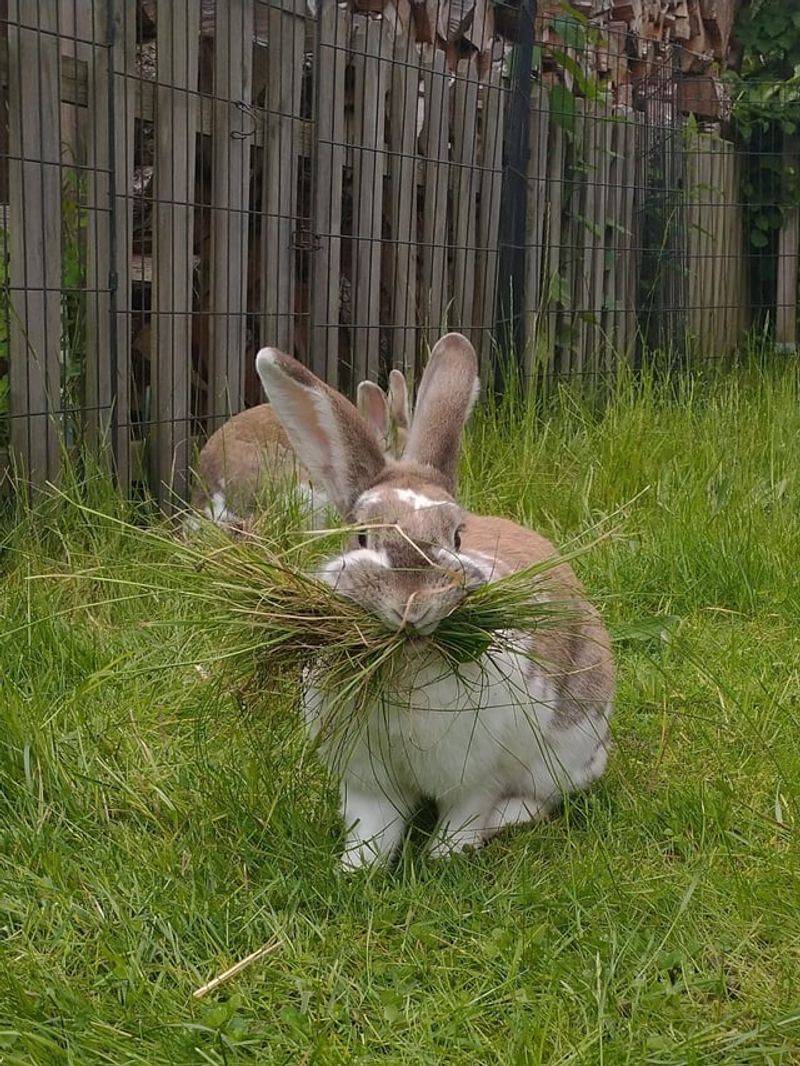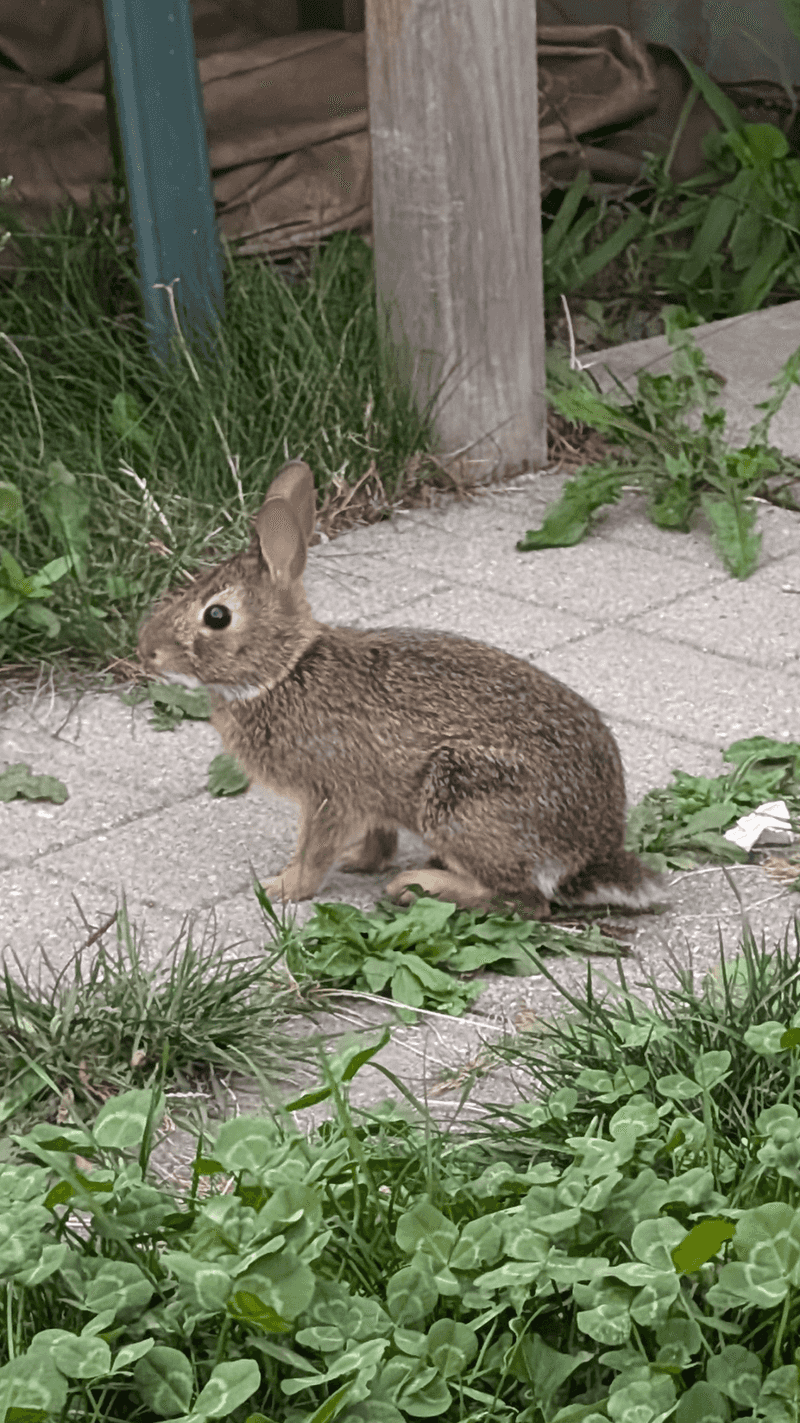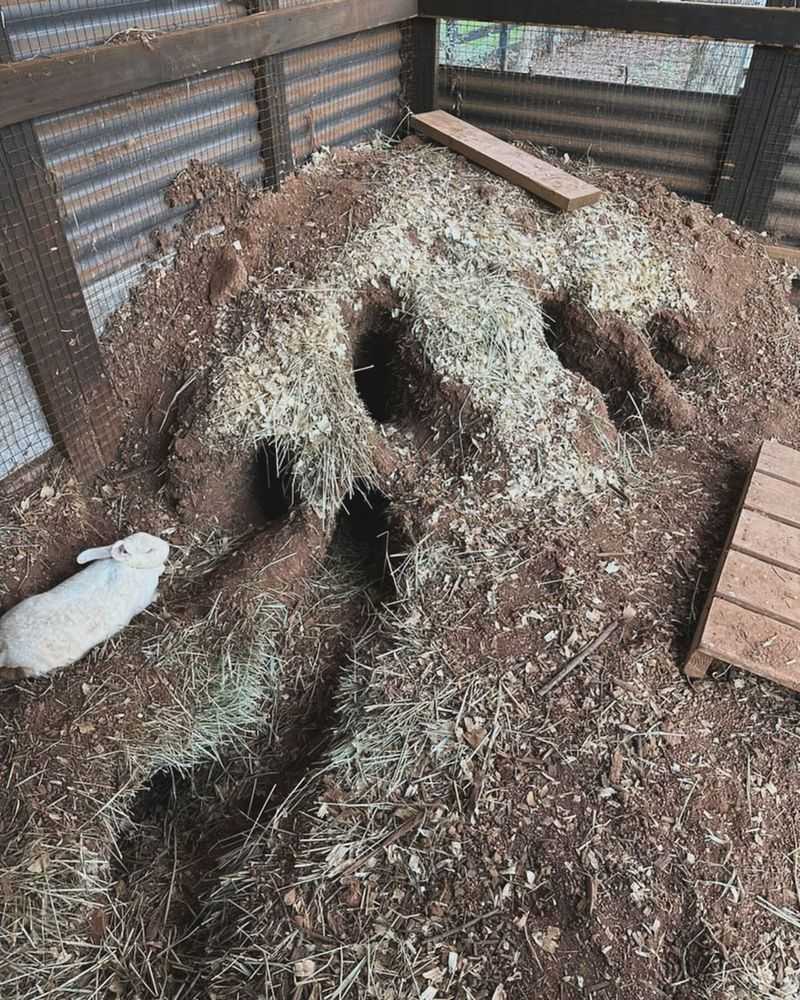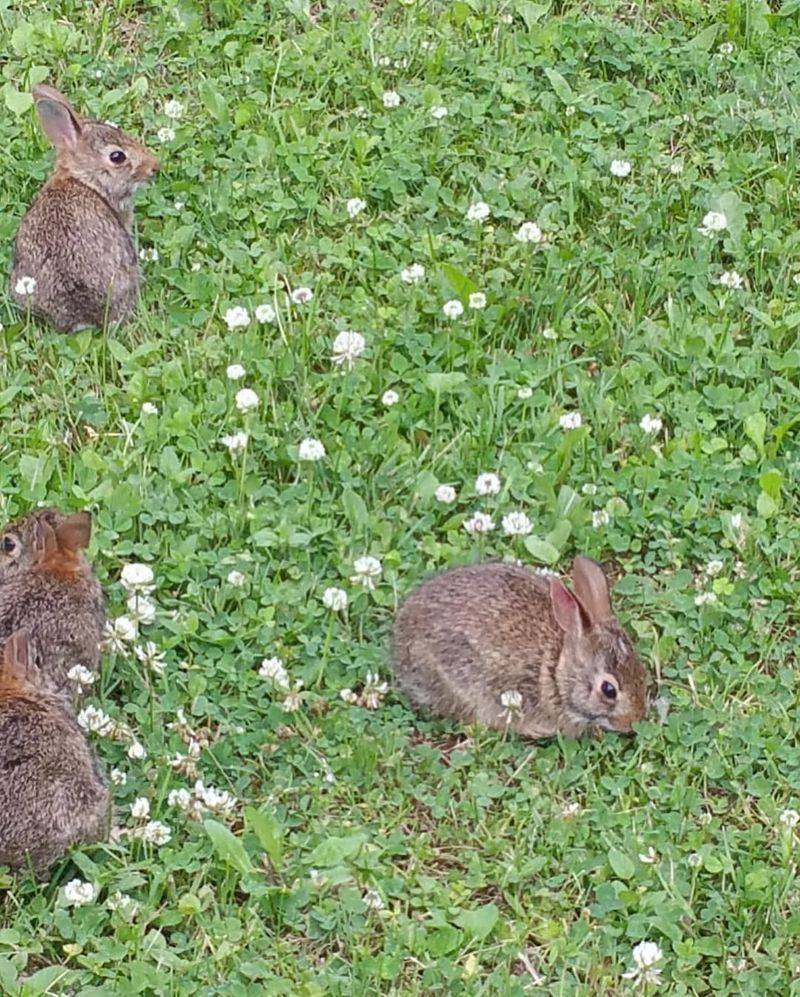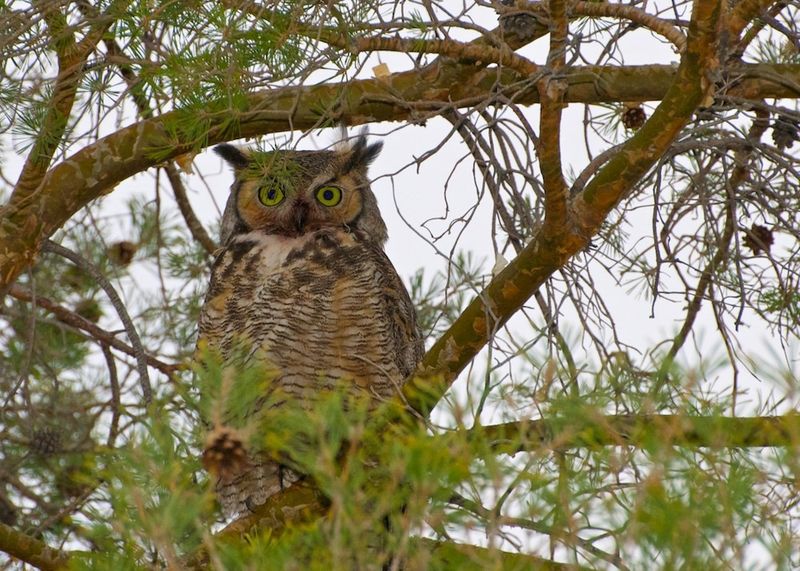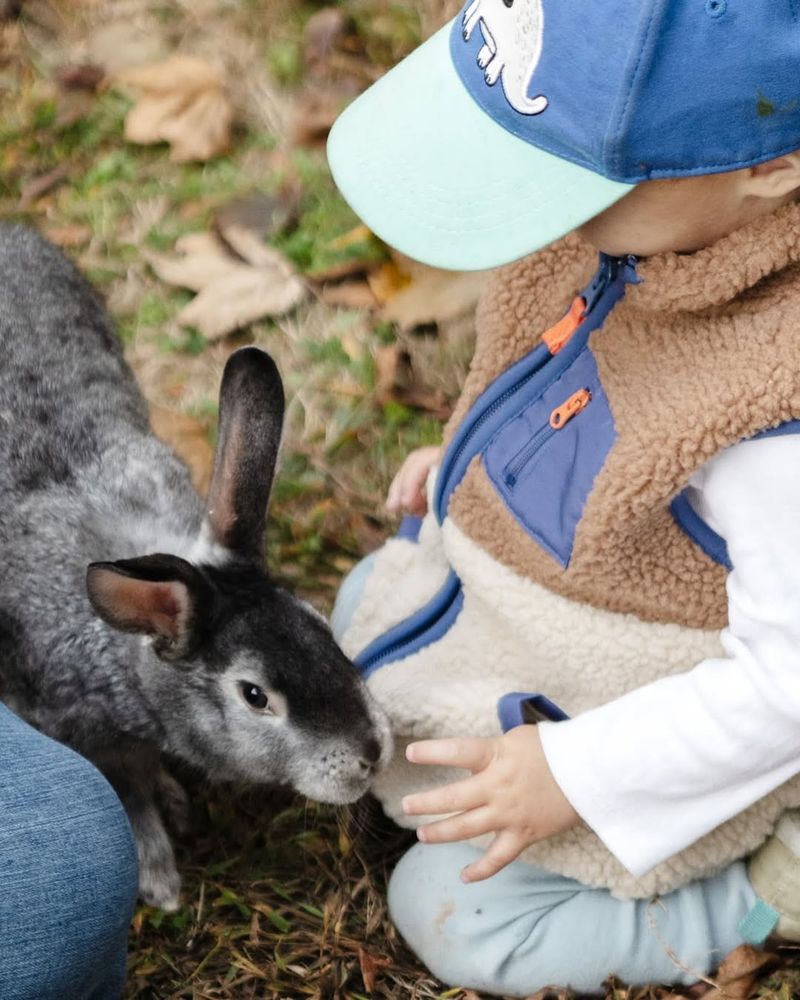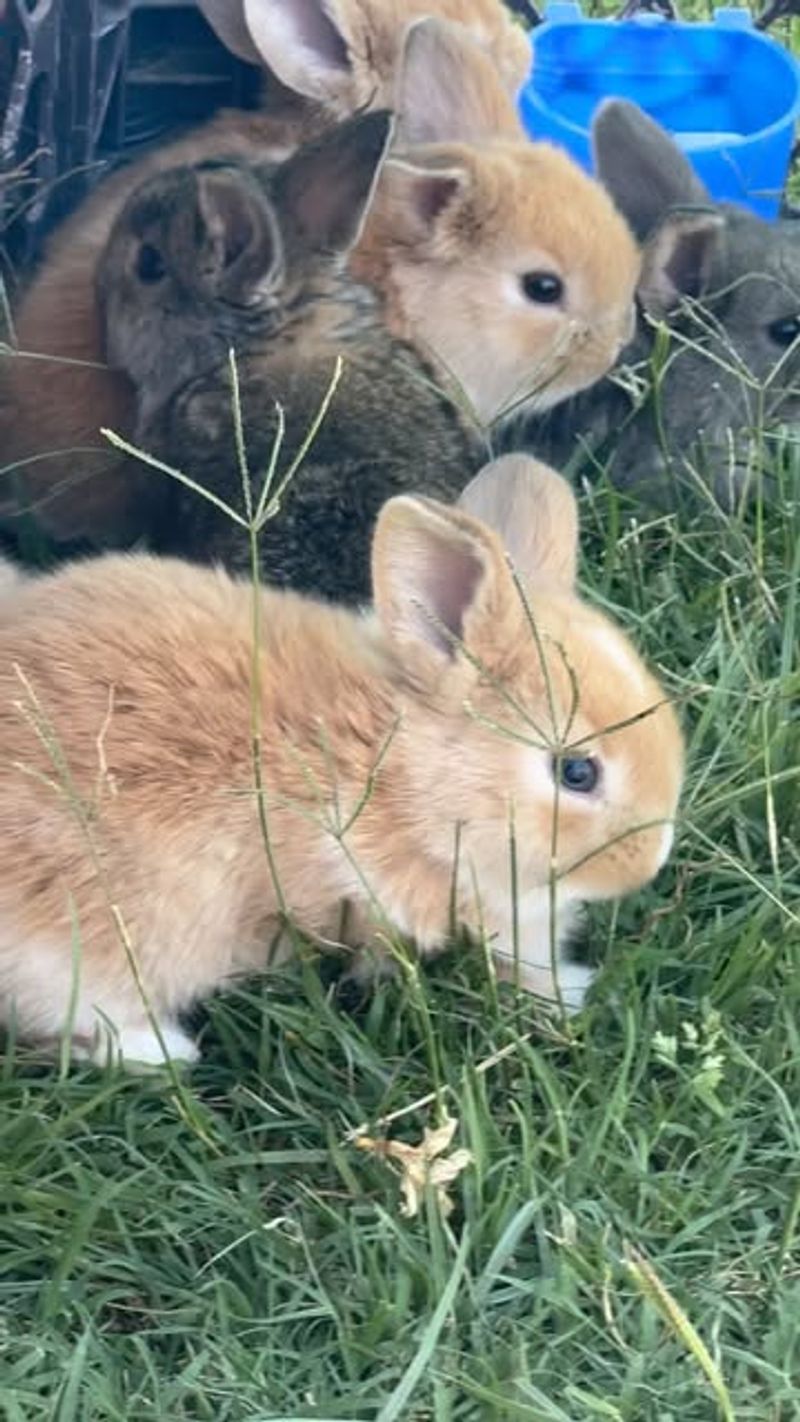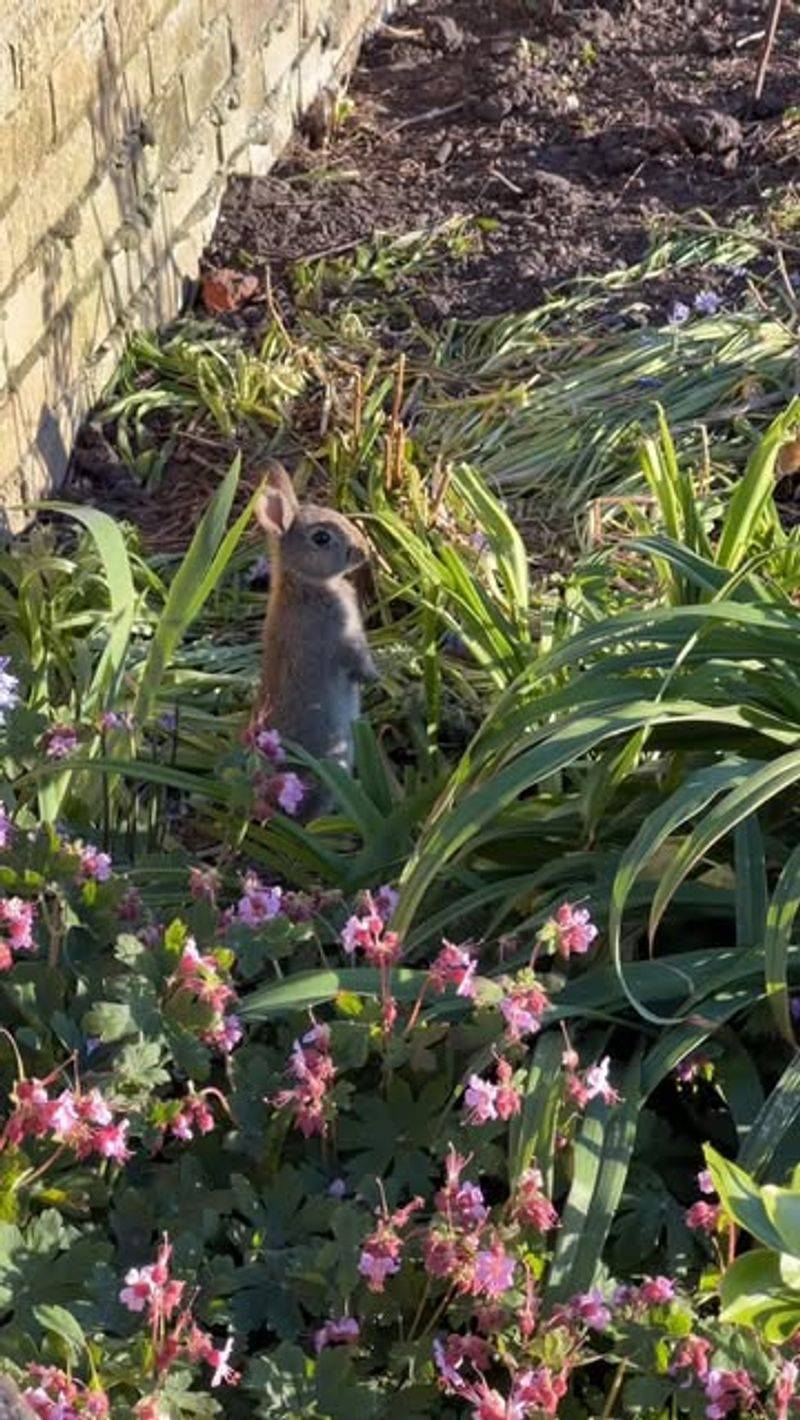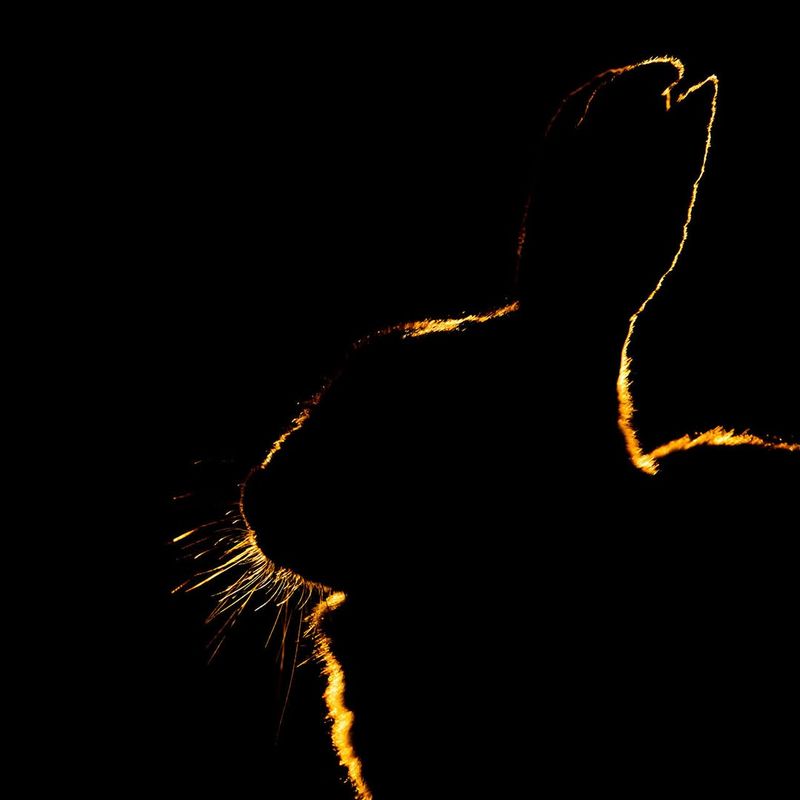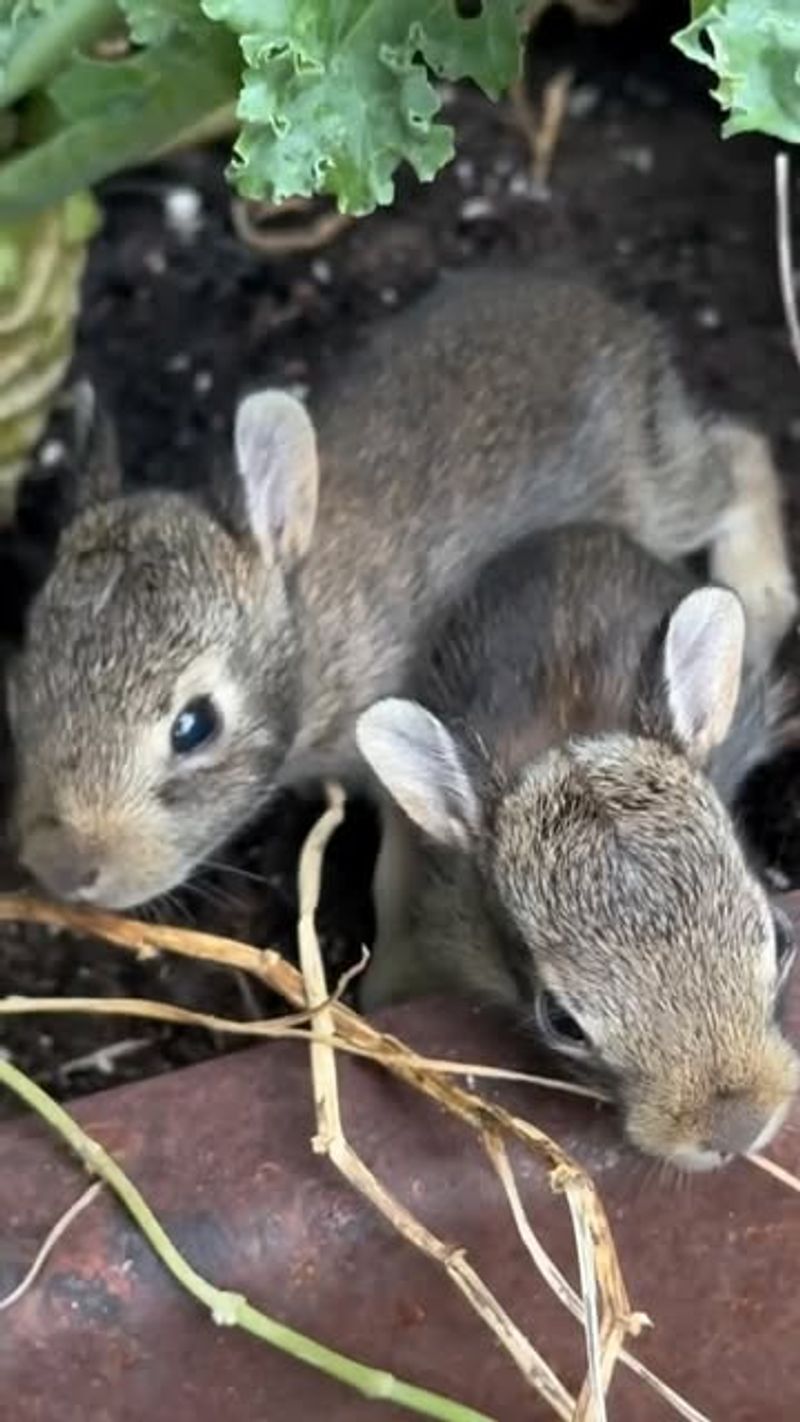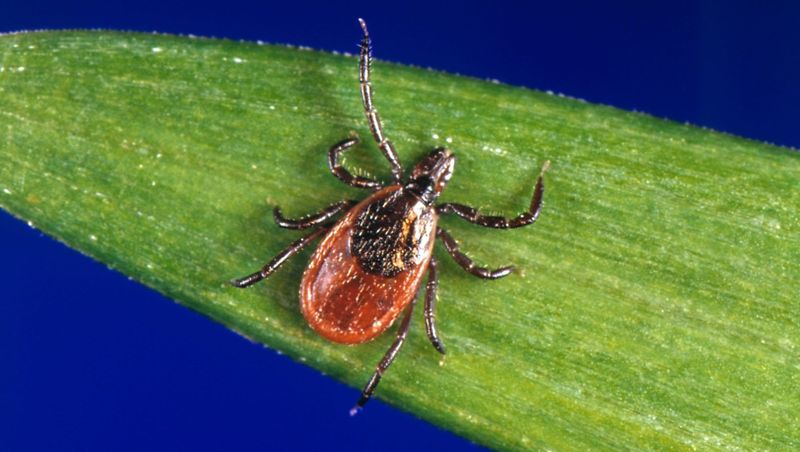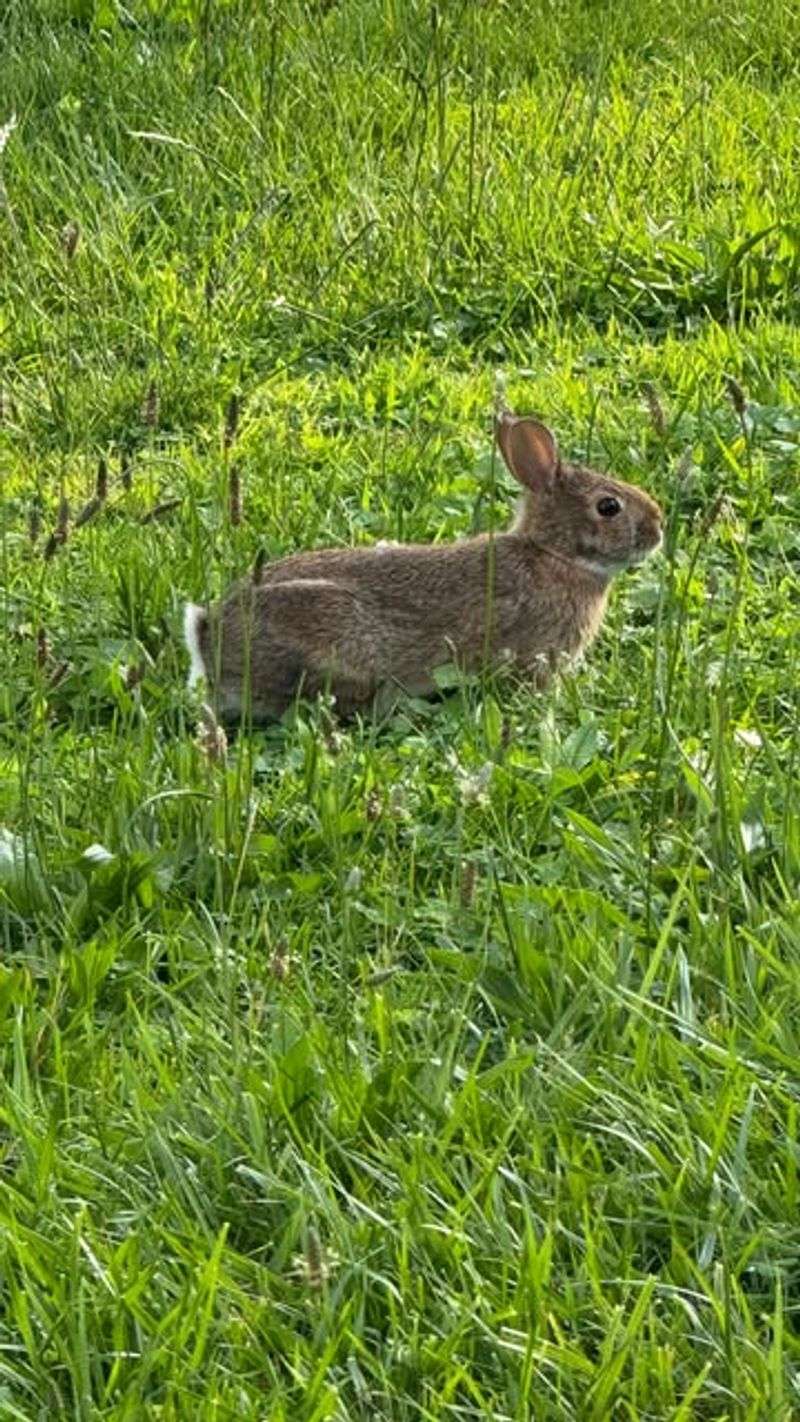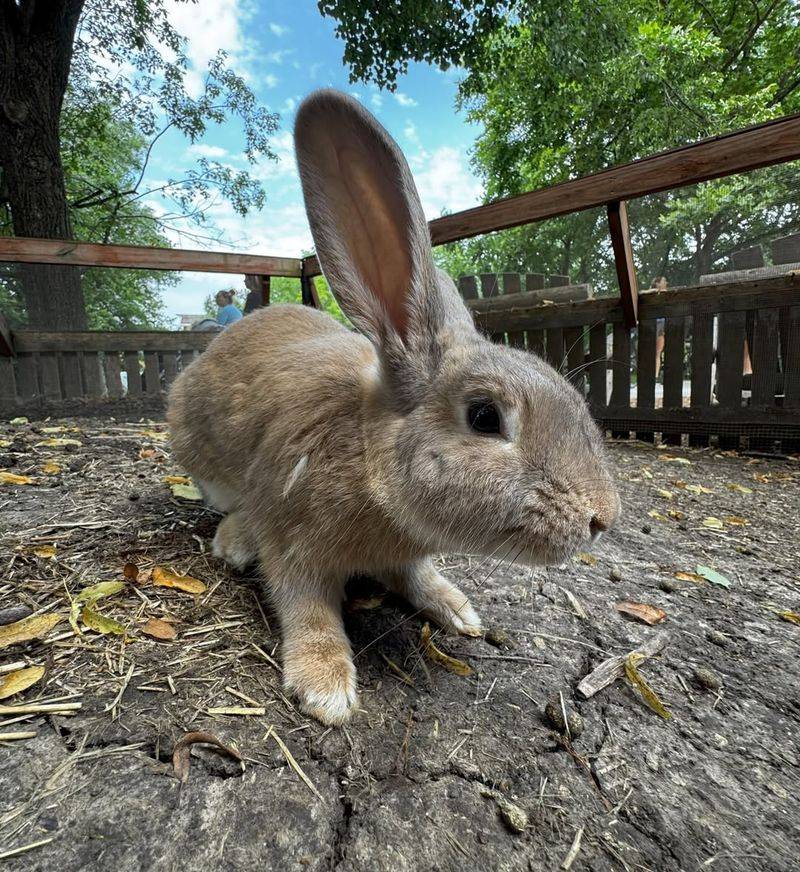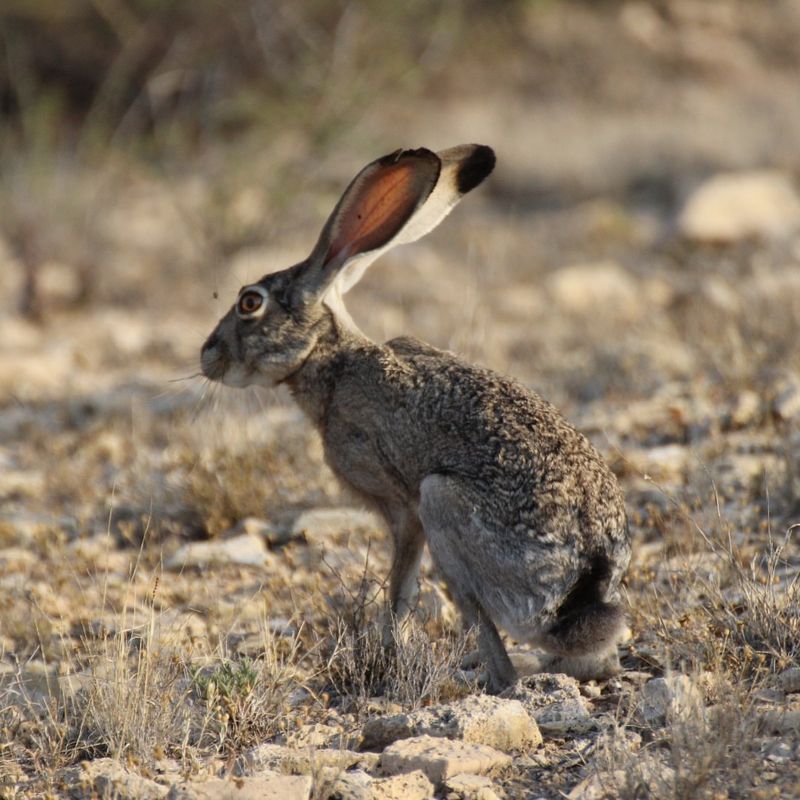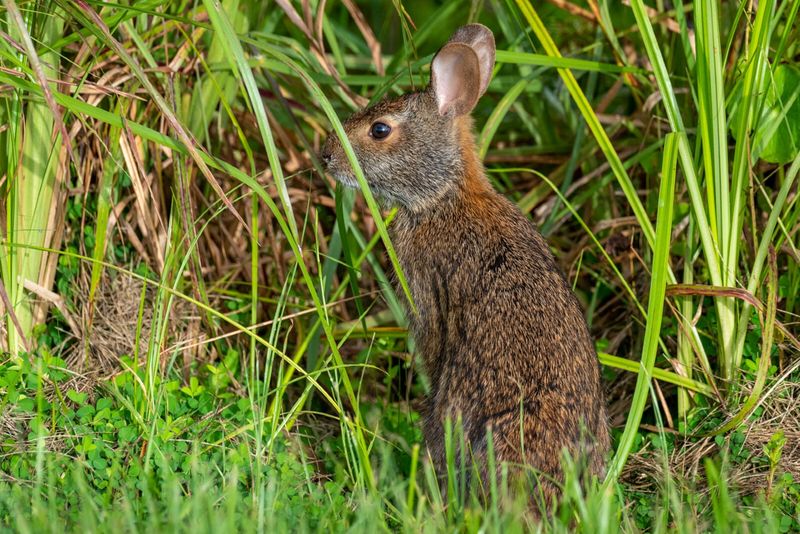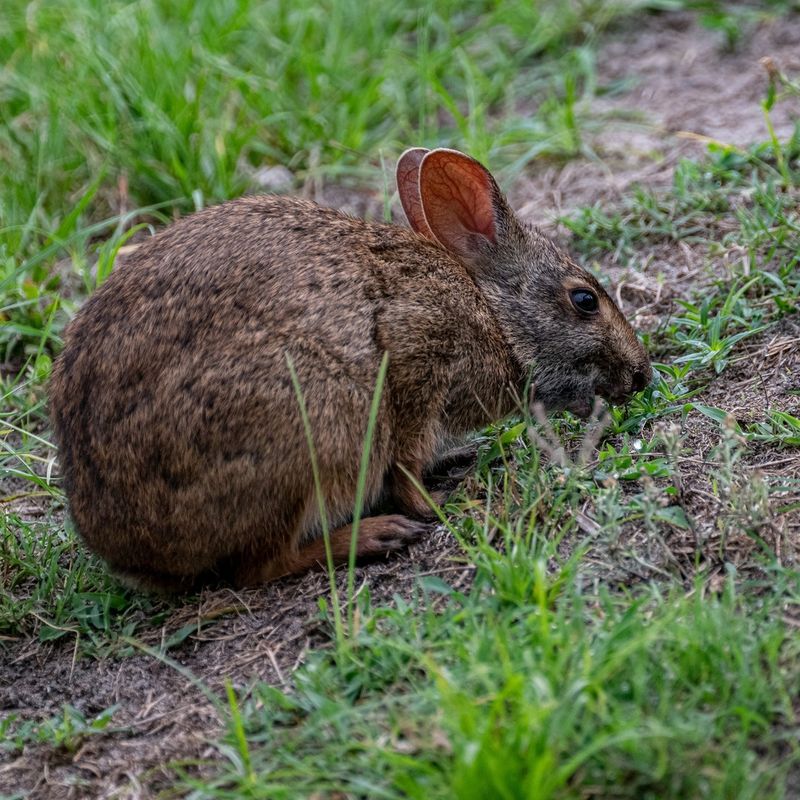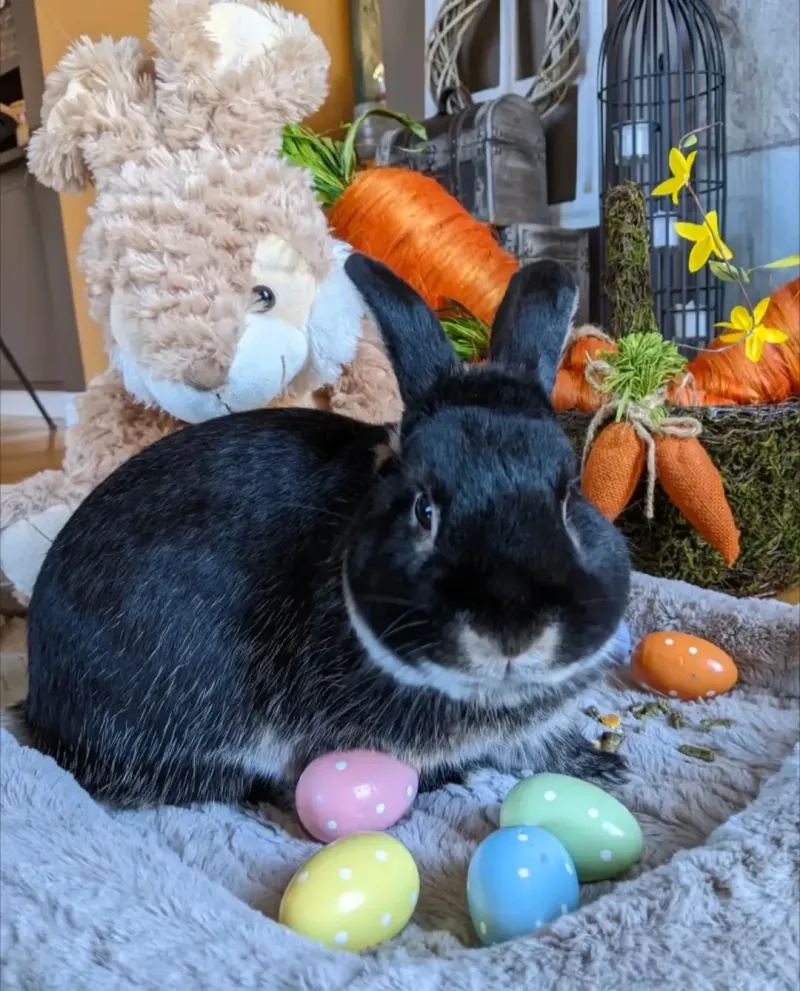You see a rabbit nibbling your plants and your first instinct is to show it the door—fast. But don’t hop to conclusions just yet. Those big ears and twitchy noses might be doing more good than harm.
Before you slam the gate shut, here are 18 reasons why letting rabbits stay in your yard could actually work in your favor.
1. Natural Lawn Mowers
Rabbits happily munch on grass, keeping certain areas of your lawn naturally trimmed without noisy gas-powered equipment. This free lawn maintenance service helps you save time and energy.
They’re particularly fond of dandelions and other common lawn weeds, providing natural weed control while they nibble. The bonus? Their selective grazing patterns create interesting texture variations in your yard.
Unlike mechanical mowers, rabbits work quietly at dawn and dusk, never disturbing your weekend sleep or neighborhood peace.
2. Fertilizer Factories
Rabbit droppings rank among the richest natural fertilizers available. Unlike chicken or cow manure, rabbit pellets can be applied directly to plants without burning them because they’re not too nitrogen-heavy.
Each tiny pellet contains concentrated nutrients that slowly release into your soil, improving plant health over time. Garden enthusiasts often pay good money for this type of organic fertilizer.
The scattered distribution pattern means rabbits deposit these nutrient bombs exactly where your yard needs them most, creating healthier soil with no effort from you.
3. Soil Aerators
Hopping around your yard, rabbits naturally loosen compacted soil with their movements. Their lightweight bodies create small indentations rather than damaging compression.
When digging their shallow resting spots (forms), they turn over topsoil in gentle ways that benefit plant roots. This natural aeration allows water and nutrients to penetrate deeper into the ground.
Professional landscapers often charge hefty fees for aeration services that rabbits provide for free, improving your soil structure year-round without heavy machinery disrupting your yard.
4. Seed Dispersers
Rabbits accidentally become gardening assistants by spreading plant seeds throughout your property. Seeds stick to their fur or pass through their digestive systems, then get deposited in new locations.
Many native wildflowers rely on this natural distribution method. Your yard might suddenly bloom with unexpected native plants that attract butterflies and hummingbirds, all thanks to rabbit transportation services.
Unlike deliberate planting, this random seeding creates naturalistic patterns that professional landscapers try to imitate when designing wildflower meadows.
5. Hawk and Owl Attractors
Backyard rabbits attract magnificent birds of prey like hawks and owls to your neighborhood. These majestic predators provide natural rodent control, reducing mice and vole populations that damage gardens.
Many bird watchers install expensive owl boxes hoping to attract these birds, but having rabbits creates a natural food chain that brings them automatically. Watching a red-tailed hawk soar above your property offers breathtaking wildlife viewing opportunities.
Children especially benefit from witnessing this natural predator-prey relationship, gaining valuable lessons about ecosystem connections right in your yard.
6. Teaching Tools for Kids
Neighborhood rabbits provide living science lessons for curious children. Observing wild rabbits teaches kids about animal behavior, life cycles, and habitat needs without classroom walls.
Young ones develop observation skills by tracking rabbit activities and noticing pattern changes across seasons. Many parents report their children becoming more interested in nature books and environmental topics after watching backyard rabbits.
Unlike pets that require constant care, wild rabbits offer learning opportunities without responsibility burdens, making them perfect introduction animals for nature education.
7. Stress Reducers
Watching rabbits go about their daily routines creates surprising mental health benefits. Their gentle movements and peaceful grazing have effects similar to meditation for many observers.
Studies show that connecting with wildlife reduces stress hormones and lowers blood pressure. Morning coffee accompanied by rabbit-watching becomes a calming ritual that many find more effective than manufactured relaxation products.
Unlike demanding pets, wild rabbits require nothing from you while providing these psychological benefits, making them perfect therapy animals for busy households.
8. Garden Design Influencers
Living with rabbits encourages more creative garden planning than standard suburban landscapes. Gardeners learn which plants rabbits avoid, discovering interesting native species that thrive without protection.
This natural selection process often results in gorgeous, drought-resistant gardens featuring aromatic herbs, ornamental grasses, and flowering perennials rabbits typically ignore. Many rabbit-resistant plants also attract beneficial pollinators, creating vibrant ecosystem hubs.
Professional landscapers now intentionally design “rabbit-friendly” spaces that partition edible and non-edible sections, creating more interesting visual layouts than traditional gardens.
9. Photography Subjects
Backyard rabbits provide endless photography opportunities that change with seasons and lighting conditions. Their expressive faces and characteristic poses create frame-worthy images without expensive travel to wildlife destinations.
Many amateur photographers have developed serious skills by practicing with the challenging subject of rabbits in natural settings. The patience required for good rabbit photography transfers to other life skills.
Social media posts featuring backyard bunnies consistently receive high engagement, turning your yard visitors into minor internet celebrities while connecting you with nature enthusiasts worldwide.
10. Natural Pruners
Rabbits selectively nibble lower branches of shrubs, creating natural “poodle pruning” that many gardeners pay professionals to achieve. This ground-level trimming improves air circulation around plants, reducing fungal disease issues.
Their preference for tender new growth often results in bushier plant development as side branches multiply after nibbling. Many flowering shrubs produce more blooms following this natural pruning process.
Unlike mechanical trimmers that cut indiscriminately, rabbits choose specific branches based on taste and nutrition, creating more natural-looking results than human pruning often achieves.
11. Tick Controllers
Rabbits groom themselves constantly, removing and consuming ticks that might otherwise find human hosts. A single rabbit can eliminate hundreds of ticks from your yard environment each season.
Their regular movements through tall grass areas disturb tick habitats, making it harder for tick populations to establish dense colonies. Many homeowners notice fewer tick problems in yards with regular rabbit activity.
Unlike chemical tick treatments that harm beneficial insects, rabbits provide targeted pest management that works within natural systems without environmental damage.
12. Weather Predictors
Rabbit behavior changes noticeably before weather shifts, making them reliable forecasters for gardeners. Increased feeding activity often signals approaching storms as rabbits prepare for shelter time.
Their coat conditions reflect seasonal changes more accurately than calendars, with visible shedding patterns indicating true spring arrival. Observant homeowners learn to read these signals for better garden planning.
Unlike weather apps that provide generic forecasts, rabbits respond to micro-climate conditions specific to your exact location, offering hyperlocal predictions technology can’t match.
13. Conversation Starters
Neighborhood rabbits create natural connection points between neighbors who might otherwise never interact. Shared rabbit sightings become community events that build relationships across property lines.
Children especially benefit from these connections, forming friendships through shared rabbit-watching experiences. Many neighborhoods develop informal communication networks based on tracking local rabbit families.
Unlike manufactured community events, these natural interactions happen organically and create genuine bonds based on shared appreciation for local wildlife.
14. Predator Warners
Rabbits serve as excellent alarm systems, alerting you to unusual yard visitors through their distinctive behaviors. Their freeze-and-flee responses signal the presence of neighborhood cats, coyotes, or unfamiliar humans.
Many homeowners report discovering potential security issues after noticing rabbit behavior changes. Their consistent patterns make behavioral shifts easy to interpret once you learn their normal routines.
Unlike electronic security systems that trigger false alarms, rabbits respond only to genuine concerns while providing 24-hour surveillance that requires no electricity or monthly fees.
15. Seasonal Celebrators
Rabbits mark seasonal changes more visibly than calendars, with behaviors and appearances that shift throughout the year. Spring brings dramatic courtship displays, while summer features adorable baby bunnies learning survival skills.
Fall triggers fascinating coat changes and food-gathering behaviors, while winter shows their remarkable adaptation through snow tunnels and foraging techniques. Each season offers new rabbit-watching experiences.
Many families develop traditions around first baby bunny sightings or seasonal coat changes, creating meaningful nature connections that store catalogs and holiday decorations can’t match.
16. Garden Protectors
Surprisingly, rabbits help protect gardens by consuming plants that would otherwise become invasive problems. Their preference for dandelion flowers prevents thousands of windborne seeds from spreading throughout your yard.
They selectively remove certain aggressive seedlings that would otherwise outcompete desirable plants. Many gardeners notice better native plant survival in areas with moderate rabbit activity.
Unlike chemical weed killers that harm soil biology, rabbits provide targeted removal of specific problem plants while leaving beneficial species untouched.
17. Ecosystem Indicators
Healthy rabbit populations signal overall environmental health in your neighborhood. Their presence indicates sufficient plant diversity and limited chemical usage in the surrounding area.
Tracking rabbit numbers over time provides valuable data about local ecosystem changes that might otherwise go unnoticed. Many citizen science projects actively seek this type of observation data from homeowners.
Unlike expensive environmental testing, rabbits offer free biomonitoring that integrates multiple factors into a single, easily observable indicator of your yard’s ecological health.
18. Connection Creators
Living alongside rabbits fosters deeper connections with the natural world right outside your door. Many people report increased awareness of seasonal changes, plant growth patterns, and other wildlife after observing rabbits regularly.
Children who grow up watching backyard rabbits often develop stronger environmental ethics and conservation values than those without wildlife experiences. This connection translates into lifelong appreciation for natural systems.
Unlike nature documentaries about distant ecosystems, backyard rabbits create tangible, daily connections to wildlife that build genuine environmental consciousness through direct experience.

